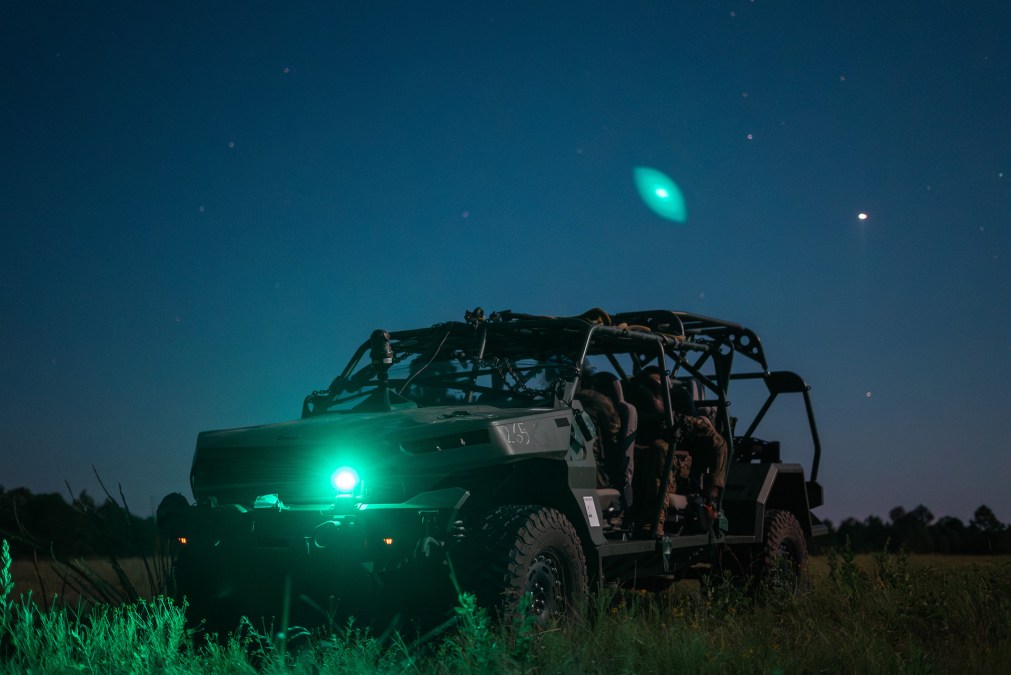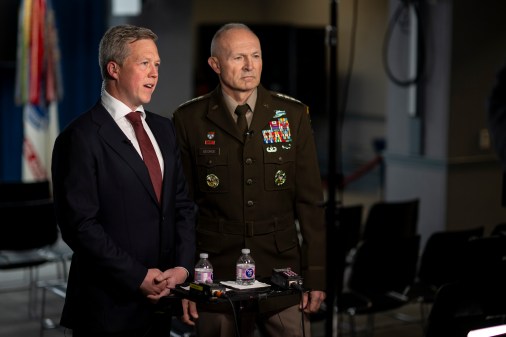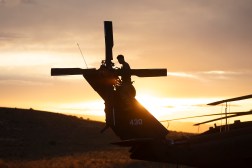Army looking to cancel legacy systems, pursue dual-use capabilities

The Army is planning to eliminate systems it deems obsolete for soldiers on the battlefield in the future, as senior leaders call for greater use of commercially available capabilities going forward.
The traditional acquisition system can take years from initial requirements to fielding meaning that by the time units received it, the capability could be outdated or didn’t work as intended.
“The American politicians over 30 years have harmed the American soldier, not necessarily intentionally in all instances, but they have let rational decision-making decay. They have a lot of calcified bureaucracy get in the way of doing what’s right,” Secretary Daniel Driscoll told reporters Thursday at the Pentagon. “We are changing that. From this moment forward, we are going to make every decision, and the only thing we are going to weigh is this good for the American soldier, does this make them more lethal, when we send them around the world to fight and kill on our behalf, does this increase the odds of them succeeding at that mission and coming home to their community safely?”
This comes on the heels of a memo signed Wednesday by Defense Secretary Pete Hegseth charging Driscoll to transform the Army by making it leaner through combining and slashing certain headquarters elements and changing how the service purchases capabilities, all in the name of prioritizing homeland defense and deterring China in the Indo-Pacific.
Driscoll noted that the Army going forward will eliminate obsolete equipment that continued to show up in motor pools despite soldiers wanting to get rid of them.
“All of these parochial interests and all of these lobbyists that crawl around this building and crawl around Congress, they have succeeded for far too long. The first thing is, we are going to start to cut the things we don’t want or need,” he said.
Gen. Randy George, chief of staff, noted how the Army last year canceled the RQ-7 Shadow drone program, a capability he said wasn’t very good when he was a brigade commander in Afghanistan in 2009.
“We just have to stop spending our money on things that we know are not going to make us more lethal,” George said.
Key to that effort is modular and open systems, something George has been pushing for the last year-plus. Officials didn’t outline any specific metrics they’d use to evaluate whether a program wasn’t meeting lethality standards, but they stressed they want to rely on commercially available, dual-use systems to get out of the game of custom-built systems as much as they can.
A prime example is the GM Defense-designed Infantry Squad Vehicle, an expeditionary vehicle based off a Chevy Colorado, with a special off-road kit that enhances capability across complex terrain.
“It’s already got consumer buy-in, it’s got a consumer demand signal that the company can build out manufacturing. It can model out what it needs. In the years where the United States Army has funding constraints or when it gets caught up in Congress, they’re not relying on us to keep their lights on,” Driscoll said. “That is the perfect kind of model for most. And much of our equipment should be these dual-use purposed vehicles and assets so that we’re capable of being a better partner. The things we’re going to try to avoid is being the sole customer of a business, because it’s not fair to us and it’s not fair to the business.”
George said officials want systems that can be easily modified and upgraded. The ISV provides a template to mount different sensors and systems that aren’t produced by GM Defense, a key aspect going forward for modularity.
He said any vehicle, for example, will need an active protection system, but some companies will be better at building them than others. The platform builder doesn’t have to be the one to develop the active protection system as well.
“We should be looking at acquisition in terms of what we can adopt. You have a program manager that says, ‘okay, I can adopt this technology because it’s out there and it’s dual use,’” George said. “There’s others that you could modify. ISV is an example. It’s dual use, but you can modify it.”
Driscoll pointed to the startup and venture capital world, which has in the last few years come booming into the defense sector. Many top officials in the Trump administration have private equity and venture capital backgrounds, so it’s no surprise the military would be looking to prioritize those types of avenues.
Notably, Secretary Hegseth early in his tenure signed a memo directing components to leverage the software acquisition pathway. In his memo last night, he directed the Army to expanded use of other transaction agreements. The Army has typically been the service with the most OTA use in the past.
“Startups in the venture capital community have solved this for a very long time. You create a minimum viable product, you get it into the hand of your customers, and you get market feedback, and you tweak and pivot,” Driscoll said. “We, the Army, can and should, and we are doing that now too, to hold ourselves accountable and tighten the feedback loop in our manufacturing process.”
He cited an example from an unmanned company that makes autonomous software for commercial cars, or what Driscoll called the “brains” of commercial vehicles. While that company had never worked with the military before, the Army provided them with an ISV and Humvee and gave them 10 days to see what they could do.
According to Driscoll, the technology allowed the vehicles to be controlled autonomously and synchronize with drones, among other things. The Army sent those vehicles to soldiers to play with in the field to figure out what worked and what didn’t.
While Driscoll said he’s not sure if the Army will work with that company again, he cited that as a key example of how the service wants to operate in the future.
“This would have taken five-to-eight years in any other instance. And we’ve done it in under three weeks so far,” he said.
George also noted that much of this modularity begins with the network. In order to be able to share information and move data rapidly, there needs to be a robust communications backbone.
Much of these lessons have been and will continue to be learned through the service’s transforming-in-contact effort, which aims to speed up how the Army buys capabilities and designs its forces by injecting emerging capabilities into units and letting them experiment with them during exercises and deployments.
“The drones that we had for the second brigade were different than the first, so on and so forth,” George said of transforming-in-contact. “It’s the bottom-up feedback. That’s what we need to continue to do for everything we have.”
Editor’s Note: This story was updated May 5 with clarifying information from GM Defense, the contractor for the Infantry Squad Vehicle.






